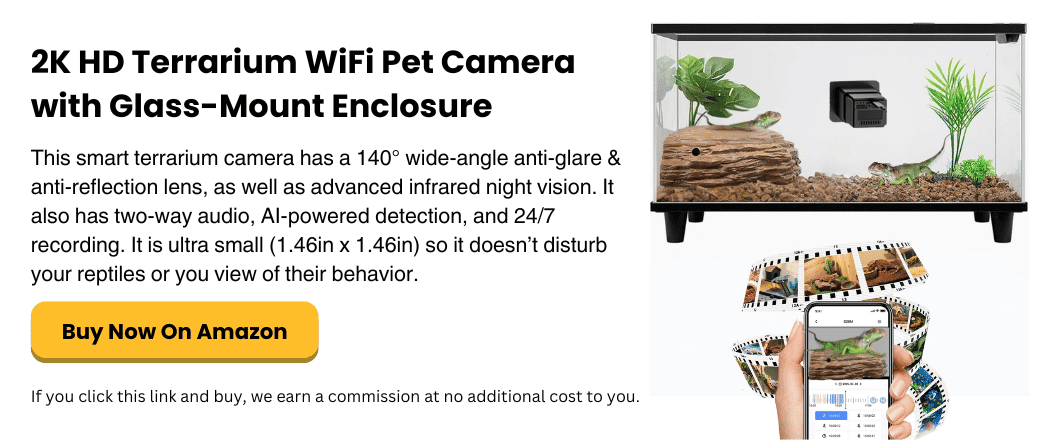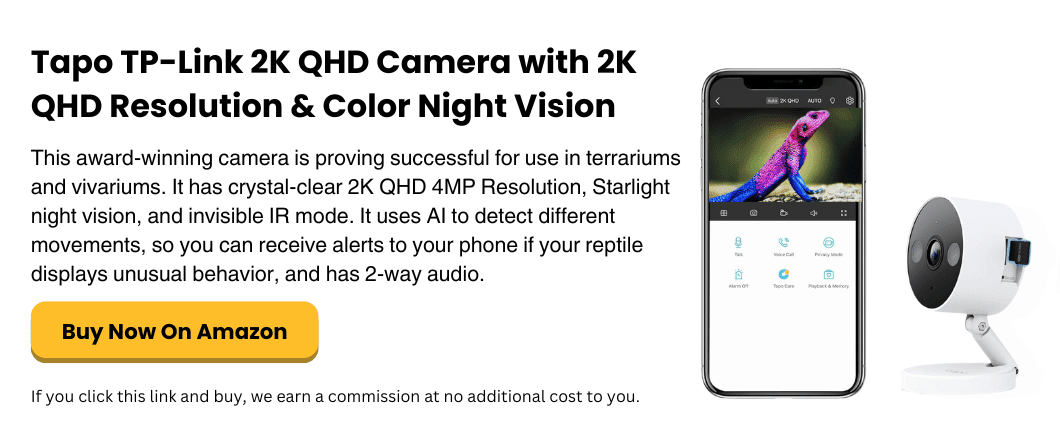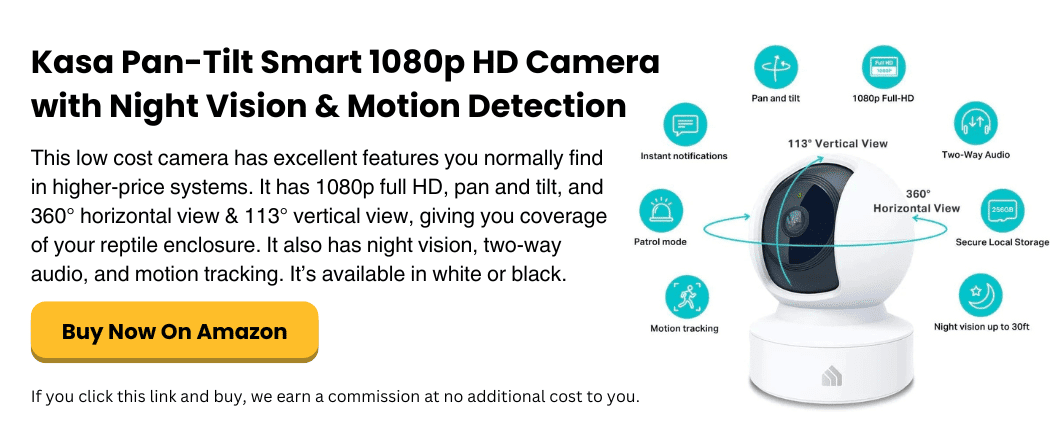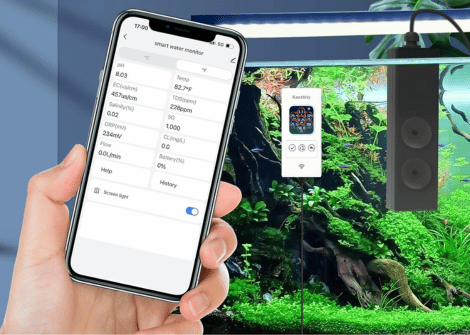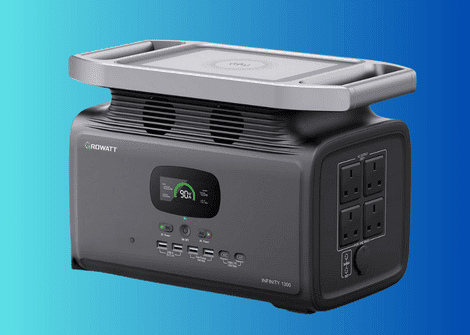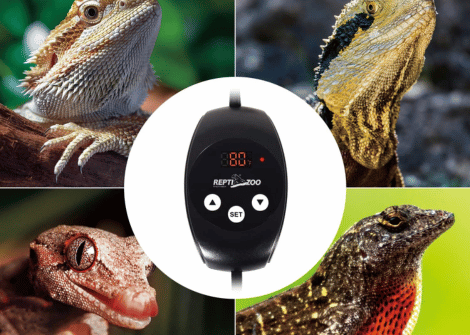A Complete Guide To Smart Cameras for Reptile Owners
Getting a smart pet camera might not be an obvious choice for reptile owners. Unlike other pets that exhibit clear distress signals or destructive behaviors when left alone, reptiles present unique monitoring challenges that traditional cameras weren’t designed to address.
However, smart cameras have become invaluable tools for responsible reptile keepers who want to monitor their cold-blooded companions and maintain optimal habitat conditions around the clock.
By installing a smart camera in your reptile enclosure, you’re not just watching for entertaining antics or ensuring your pet isn’t getting into trouble. Instead, you’re monitoring environmental conditions, observing natural behaviors, and checking the complex ecosystem you’ve created remains stable when you’re not physically present.
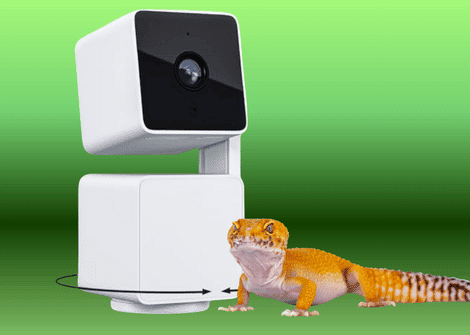
Table of Contents
Why Reptile Owners Need Smart Cameras
Essential Features For Reptile Monitoring
Understanding Different Camera Types
Setting Up Effective Monitoring Systems
Behavioral and Health Monitoring
Privacy and Security Considerations
The Best Smart Cameras For Reptile Owners
Troubleshooting Common Issues
Why Reptile Owners Need Cameras
Reptiles are fundamentally different from warm-blooded pets in ways that make remote monitoring particularly valuable. Many health or environmental issues can develop without obvious warning signs that might alert an owner during routine daily interactions.
Temperature and humidity fluctuations that seem minor can be life-threatening to reptiles. A heating element failure, air conditioning malfunction, or even a power outage can create dangerous conditions within hours.
Smart cameras equipped with environmental sensors can alert you to these changes immediately, potentially saving your pet’s life.
Reptiles also exhibit natural behaviors that occur at specific times or under particular conditions. Many species are most active during dawn and dusk hours when their owners are typically away at work or asleep. Observing these natural behavior patterns helps you understand whether your pet is thriving and can reveal important information about their health and well-being.
Additionally, reptiles are expert escape artists. Snakes, in particular, can find impossibly small gaps to squeeze through, while some lizards are skilled climbers that can exploit any weakness in their enclosure.
A camera system allows you to monitor the integrity of your setup and respond quickly if an escape occurs.
When selecting a smart camera system for reptile monitoring, certain features become crucial that might not matter for traditional pet cameras. Understanding these requirements will help you make an informed decision that truly serves your reptile keeping needs.
Night vision capability stands out as perhaps the most important feature. Many reptiles are crepuscular or nocturnal, meaning their most interesting and natural behaviors occur in low-light conditions.
High-quality infrared night vision allows you to observe your pet without disturbing them, unlike normal visible light that might alter their behavior patterns.
Environmental monitoring sensors separate reptile-focused cameras from standard pet monitoring systems. Temperature and humidity sensors that can trigger alerts when conditions fall outside preset parameters are essential.
Some advanced systems also monitor light levels, which is particularly important for species that require specific photoperiods or UV lighting schedules.
Two-way audio, while not always necessary, can be surprisingly useful for reptile owners. While your gecko won’t respond to your voice like a dog might, the ability to detect unusual sounds in the reptile room or enclosure can alert you to equipment malfunctions, unusual activity, or potential problems that might not be immediately visible on camera.
High resolution video quality ensures you can observe subtle changes in your reptile’s appearance, posture, or behavior that might indicate health issues.
The ability to zoom in on specific areas of the enclosure or get a clear view of your pet’s eyes, skin condition, or eating habits can be invaluable for early detection of problems.
Motion detection and alert systems designed for reptile behavior patterns are crucial. Unlike cats and dogs, reptiles move differently and less frequently.
The camera system should be sensitive enough to detect subtle movements while avoiding false alarms from minor environmental changes like plant movement or water features.
Understanding Different Camera Types
Smart pet cameras come in several configurations, each with distinct advantages for reptile monitoring applications. Understanding these differences helps you choose the right system for your specific setup and needs.
Fixed indoor cameras represent the most common and affordable option for basic reptile monitoring.
These cameras mount in a stationary position and provide a consistent view of your reptile’s enclosure. While they lack the flexibility of pan-and-tilt models, their simplicity often translates to better reliability and longer battery life.
Pan-tilt-zoom cameras offer increased flexibility, allowing you to remotely adjust the viewing angle and focus on different areas of larger enclosures.
This capability proves particularly valuable for monitoring multiple reptiles or observing specific behaviors in different zones of a complex habitat. However, the mechanical components can be more prone to failure and may create noise that could disturb sensitive species.
Outdoor-rated cameras become necessary if your reptile setup includes outdoor enclosures, greenhouse spaces, or if you keep your reptiles in areas that experience temperature and humidity extremes.
These weatherproof systems can handle the demanding conditions often present in reptile rooms, including high humidity levels that might damage standard indoor cameras.
Wireless versus wired systems each offer distinct advantages for reptile monitoring.
Wireless cameras provide easier installation and greater flexibility in placement but depend on reliable Wi-Fi connectivity and regular battery maintenance.
Wired systems offer more stable connections and continuous power but require more complex installation and limit placement options.
Setting Up Effective Monitoring Systems
Successful reptile camera monitoring requires thoughtful planning and strategic placement to maximize effectiveness while minimizing disruption to your pets and their environment. The goal is creating a comprehensive monitoring system that provides valuable information without interfering with the carefully balanced ecosystem you’ve established.
Camera placement should prioritize views of critical areas within each enclosure.
Position cameras to monitor basking spots, feeding areas, water features, and hiding places. For arboreal species, ensure coverage of vertical spaces and climbing structures.
Multiple camera angles often prove more valuable than a single high-resolution view, as reptiles can position themselves in ways that obscure important details from any single vantage point.
Consider the impact of camera placement on your reptile’s stress levels.
While most reptiles quickly habituate to the presence of cameras, positioning them too close to hiding spots or directly over basking areas might create anxiety in some individuals.
Observe your pets’ behavior after installation and be prepared to adjust camera positions if you notice signs of stress or behavioral changes.
Integration with existing room systems enhances the value of your monitoring setup.
If you already use automated lighting, heating, or misting systems, look for cameras that can integrate with these controls or at least coordinate timing to avoid conflicting operations.
Some advanced systems can even use camera data to inform automated environmental controls, though this level of integration typically requires more sophisticated and expensive equipment.
Network considerations become particularly important in reptile rooms, which often feature high humidity and temperature variations that can affect Wi-Fi performance.
Ensure robust network coverage in your reptile area, and consider wired connections for cameras in locations where wireless signals might be unreliable.
Behavioral and Health Monitoring
Smart cameras excel at providing insights into reptile behavior patterns that might otherwise go unnoticed. This observational feature proves invaluable for understanding your pet’s health, happiness, and overall well-being.
Feeding behavior monitoring allows you to observe whether your reptiles are eating normally, how they approach food, and whether they’re consuming appropriate amounts.
Many reptiles are secretive feeders or eat at times when their owners aren’t present. Camera footage can reveal important information about appetite changes, feeding difficulties, or competitive interactions in multi-reptile setups.
Activity pattern analysis helps you understand your reptile’s natural rhythms and identify changes that might indicate health problems.
Most reptiles follow fairly predictable daily patterns, and deviations from their routines often signal illness, stress, or environmental problems before other symptoms become apparent.
Social interaction observation becomes particularly valuable for species kept in groups or pairs.
Cameras can reveal dominance behaviors, territorial disputes, or breeding activities that occur when owners aren’t present. This information is crucial for maintaining appropriate group dynamics and ensuring all animals in a shared enclosure are thriving.
Shedding and growth monitoring through regular photographic documentation helps track your reptile’s development and identify potential problems with the shedding process.
Poor sheds can indicate humidity problems, nutritional deficiencies, or health issues, and early detection allows for prompt intervention.
Privacy and Security Considerations
Smart camera systems inherently create minor but potential security vulnerabilities that reptile owners should understand and address. While your reptile footage might seem less sensitive than other home security data, these systems still require proper security measures to protect your privacy and prevent unauthorized access.
Network security should be your first priority when installing any smart camera system. Use strong, unique passwords for all devices and accounts, enable two-factor authentication where available, and regularly update firmware to address security vulnerabilities.
Many reptile keepers underestimate these risks, but unsecured cameras can provide access points for broader network intrusions.
Data storage decisions affect both security and functionality.
Cloud storage offers convenience and off-site backup but raises questions about data control and ongoing costs. Local storage provides greater control and privacy but requires more technical setup and doesn’t protect against physical damage or theft of recording equipment.
Access control becomes important if multiple family members or caregivers need camera access.
Most systems allow different permission levels, so you can provide viewing access without giving full control over camera settings or recorded footage. This capability proves particularly valuable when working with pet sitters or veterinary professionals who might need temporary monitoring access.
The Best Smart Cameras For Reptile Owners
Here are what we consider the 3 best smart reptile misting systems. We have chosen the Best Overall, Best Waterproof, and Best Budget:
Best Overall Smart Camera For Reptile Owners
The 2K HD Terrarium WiFi Pet Camera is a specialized monitoring system designed specifically for reptilian and aquatic. With both day and night monitoring capabilities plus two-way audio communication, it provides comprehensive 24/7 surveillance for owners who want to stay connected with their reptiles.
Best Waterproof Camera For Reptile Owners
The Tapo TP-Link 2K QHD Camera is a versatile surveillance camera that is proving popular with reptile owners. It has 2K quad-high-definition recording with advanced AI detection capabilities, as well as color night vision and invisible infrared modes. It’s also built to withstand extreme heavy rain as powerful as high-pressure water jets!
Pros:
- Award-Winning 2K QHD Video Quality – Provides crystal-clear 2560×1440 resolution that captures fine details with exceptional sharpness and clarity.
- Advanced Color Night Vision – Delivers full-color footage even in low-light conditions, providing significantly more detail than traditional black-and-white infrared cameras for better identification capabilities.
- Intelligent AI Detection System – Sophisticated algorithms automatically differentiate movements, reducing false alarms while ensuring relevant alerts reach you promptly.
- Weatherproof Indoor/Outdoor Versatility – With an IP66 weatherproof rating, it’s perfect for humid conditions and for outdoor areas.
- Two-Way Audio – With two-way audio, which is fully recordible as well, you can hear any unusual sounds or behaviors, and prevent problems becoming major issues later on.
- Flexible Storage Options – Supports local SD card storage for cost-effective recording without monthly subscription fees, plus cloud storage options for redundant backup protection.
- Free Core Detection Features – Pet detection comes included without requiring premium subscriptions, unlike many competitors that charge monthly fees for basic AI functionality.
- Easy Installation and Setup – User-friendly mobile app and straightforward mounting system allow for quick installation and configuration without requiring professional technical expertise.
Cons:
- Subscription Required for Advanced Features – While basic AI detection is free, premium cloud storage and extended video history require ongoing monthly subscription costs that can add up over time.
- Power Cable Dependency – Requires wired power connection rather than battery operation, which may limit placement options.
Best Budget Smart Camera For Reptile Owners
The Kasa Pan-Tilt Smart 1080p HD Camera is a very affordable smart camera with features you expect of a much more expensive system. It features 360-degree pan and tilt capabilities, allowing remote control of viewing angles through a mobile app, night vision, motion detection, and compatibility with popular voice assistants like Alexa and Google Home.
Troubleshooting Common Issues
Even well-planned reptile camera systems can experience problems that require troubleshooting skills to resolve quickly. Understanding common issues and their solutions helps maintain reliable monitoring when you need it most.
Connectivity problems represent the most frequent challenge with smart camera systems.
High humidity in reptile rooms can interfere with wireless signals, while temperature variations might affect electronic performance.
Position wireless access points strategically, use Wi-Fi extenders if necessary, and consider hardwired connections for critical cameras that must maintain constant connectivity.
False alarms from motion detection systems can quickly become annoying and cause you to ignore legitimate alerts.
Properly calibrating motion sensitivity for reptile behavior patterns takes time and experimentation.
Start with higher sensitivity settings and gradually reduce them until you achieve a balance between detecting important activity and avoiding nuisance alerts from minor environmental changes.
Image quality issues often stem from improper camera placement or inadequate lighting conditions.
While night vision capabilities are important, some ambient lighting usually improves overall image quality.
Experiment with red lights or other low-impact illumination that won’t disturb your reptiles but provides better camera performance.
Power management becomes crucial for wireless camera systems, particularly in reptile rooms where high humidity and temperature variations can affect battery performance.
Establish regular maintenance schedules for battery replacement and consider backup power solutions for critical monitoring applications.
Final Thoughts
Smart pet cameras offer reptile owners unprecedented insights into their pets’ lives and environmental conditions.
When properly selected and implemented, these systems provide peace of mind, valuable behavioral data, and early warning systems for environmental or health problems.
The investment in quality monitoring equipment pays dividends in better reptile care and the confidence that comes from knowing your scaled companions are safe and thriving, even when you’re not there to watch over them personally.
More Reading
Smart lighting makes it easy to maintain natural day-night cycles and proper UVB exposure for your reptile. With app controls, you automate the lighting, and keep your pet healthy—even when you’re not home.
Both online power backup systems and line-interactive systems provide critical protection for your reptiles during power outages. They prevent health problems and even potentially fatal environmental disruptions.
A smart thermometer for your terrarium or vivarium helps keep temperatures just right—day or night. It takes the guesswork out of heating, offers remote control, and ensures your reptile stays safe, healthy, and stress-free.

